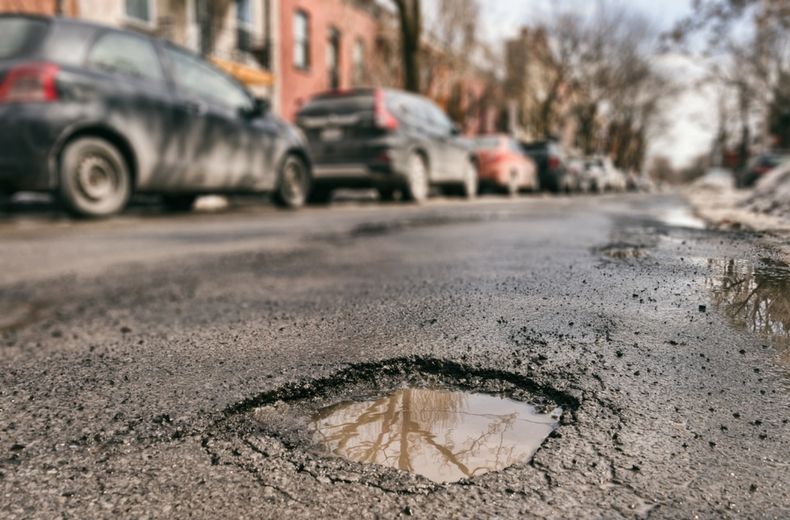Analysis from the driving services company shows it’s been far from a smooth start to the year for the nation’s drivers, with pothole-related breakdown numbers up by 10% in the last 12 months from 1st April 2023 to 31st March 2024. In this period, the RAC went out to 27,205 breakdowns, 2,299 more than the 24,906 incidents it attended between 1st April 2022 and 31st March 2023.
But the RAC believes drivers may have actually ‘dodged the pothole bullet’ in what is normally the worst three months of the year for them. Milder weather led to patrol call-out rates dropping by 22% from 10,076 last year to 7,094 in 2024.
During the winter months, sub-zero temperatures normally cause more surface deterioration as water gets into cracks in the road, freezes and expands. In the first three months of 2024, while there was an average of 121mm of rain – 22% more than normal – the milder weather meant there were only seven days of frost, against the usual average of nine. This potentially limited the number of brand new potholes forming.
For this reason, the RAC doesn’t believe the decrease in pothole-related breakdowns – damaged shock absorbers, broken suspension springs and distorted wheels – is a sign of road conditions improving. In fact the RAC Pothole Index, which measures the likelihood of suffering one of these call-outs, increased, meaning drivers are even more likely to experience damage now than they were 12 months ago.
And compared to 2006 when the RAC first began tracking these faults, drivers are now nearly twice as likely (1.76 or 76% more likely than 2006) to experience pothole damage.
RAC head of policy Simon Williams said: “While our data shows pothole damage to vehicles in the first three months of this year is lower than it was in the same period in 2023, it’s important not to lose sight of the bigger picture and the ongoing miserable state of our roads. The analysis clearly shows drivers are now twice as likely to suffer a breakdown due to sub-standard road surfaces as they were in 2006.
“While many would rightly say the roads are terrible, we believe they would have been far worse had we not had such a mild winter. We feel drivers have dodged the pothole bullet as the lack of widespread sub-zero temperatures has masked the true state of our roads.
“After all, all the cracks left by years of declining road maintenance budgets can’t easily be filled. Even though the Government has given councils an additional £8.3bn for road maintenance from the cancellation of the northern leg of HS2, we know this is only enough to resurface 5,000 miles of roads – the equivalent of just 3% of all England’s local roads.
“To make the most of this funding, we implore local authorities to focus their efforts on resurfacing the worst roads in their areas rather than pointlessly trying to patch pothole-ridden roads that can’t be saved from further decline. And now is the time for preventative action to be taken, as it’s between the warmer months of April and September when vital surface dressing work can be carried out to extend the life of roads. Sadly, government data we analysed shows 60% of English councils didn’t do any such work in the 2022-2023 financial year.
“Drivers frustrated by the UK’s pothole epidemic can highlight the problem by downloading and using Stan, a new free mobile app capable of automatically detecting road defects via a smartphone camera mounted in a cradle. The data is helping build the UK’s first ever national map of road surface issues. The RAC is urging local authorities to use the data to locate problems on their networks and carry out repairs quickly and efficiently.”
Download Stan on the App Store and Google Play.

Breakdown cover from £5.29 a month for Standard cover*
• Cheaper than AA Price Promise or we’ll beat it by 20%^
• We get to most breakdowns in 60 mins or less
• Our patrols fix 4/5 breakdowns on the spot

* The RAC Pothole Index is a 12-month rolling measure of the share of pothole fault breakdowns compared to 2006, corrected for seasonal weather effects and improving longer term vehicle reliability Data has been collected by the RAC since 2006. Data deliberately excludes punctures as the source of these could be something unrelated to road standard (for instance, the presence of nails and screws)









